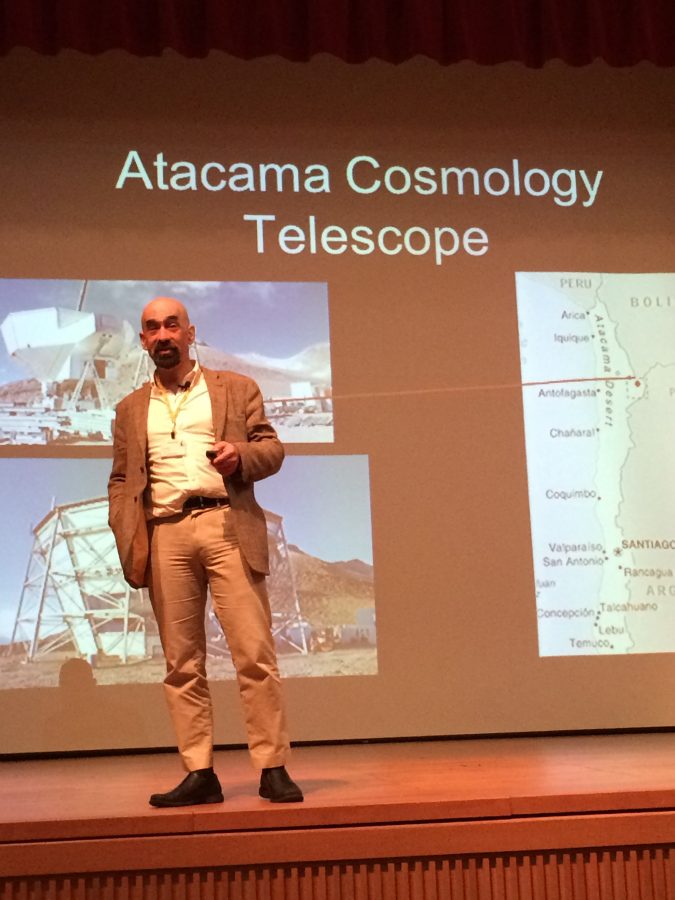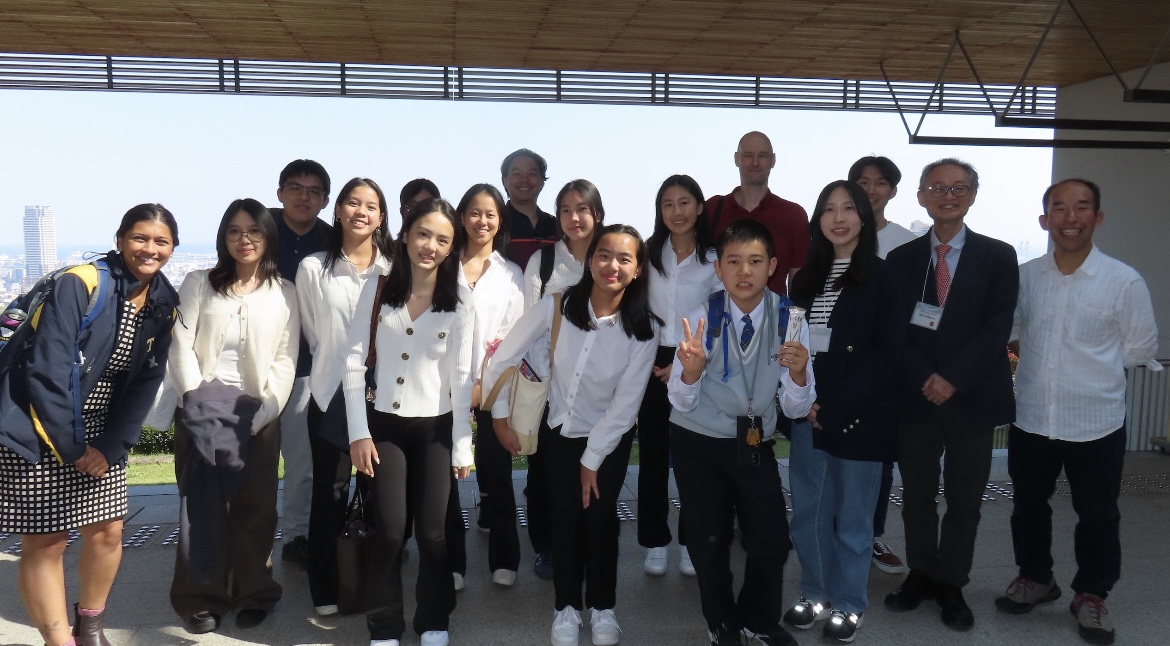The Blue & Gold’s news editor, Rachel K., got a chance to sit down with this year’s visiting scholar Dr. David Spergel, chair of the Astrophysics Department at Princeton University, to talk about his studies, the stars, and – yes – Interstellar. Here is the interview:
B&G: Thanks for sitting down with me today. Have you watched Interstellar?
Spergel: Yes, twice. In fact, Kip Thorne, who was the scientific advisor for the movie, was actually my academic grandfather. My PhD advisor was his student.
B&G: Do you think wormholes actually exist?
Spergel: We don’t know. Mathematically, they are possible. You just need something with negative mass to curve space the other way to create a wormhole. But we don’t know of any particle with negative mass. So could there be wormholes? They’re a mathematical possibility. Does nature realize them physically? We don’t know.
Personally, I don’t think they exist because if wormholes existed, we could travel back in time. Then you have all kinds of paradoxes. And there are all kinds of mathematical instabilities associated with theories that have wormholes in them. So I think they’re unlikely to be there, but it’s certainly something worth speculating about.
B&G: Do you think we could travel to stars anytime soon?
Spergel: If you could build a rocket that can travel near the speed of light, you can get to the nearest star in 7 years. That doesn’t violate the laws of physics. We can even describe how to build such a rocket. It’s only extremely expensive. It’s only extremely hard engineering.
But I wouldn’t be surprised if there were humans traveling to the nearby stars within the next four or five hundred years. I think we will travel to mars within the next 30 to 50 years. That’s really a political decision. We can travel to mars within the next 20 years if the US decided to spend one percent of its federal budget on space travel.
I think the most likely way to go to mars is through international collaboration. I think its something that the US and China should work together on. It’s a political symbol of working together.
B&G: How did you learn about and decide to visit TAS?
Spergel: My cousin Joan Pipkin teaches here. She contacted me, maybe three years ago, when they first set up the visiting scholar program. They had already identified the first visiting scholar, but they asked if I wanted to go. I said, that sounds interesting.
B&G: We had to read Heart of Darkness by Jeremiah Ostriker and Simon Mitton. Did you have to do anything with this?
Spergel: I know, and I’m responsible for that. I recommended that book because it was the best I can find on dark matter.
B&G: We weren’t required to read the chapters on dark matter. What exactly is dark matter?
Spergel: We don’t know. We can weigh our galaxy and other galaxies by looking at the motions of stars and gas. These days, we can weigh galaxies and clusters in many different ways. But no matter how we do it, we get the same answer. Atoms make up only about a sixth of the mass of galaxies. The rest is in the form of dark matter. And we don’t know what dark matter is. We see its gravitational effects but we haven’t detected it.
B&G: What do you think about TAS and its students?
Spergel: I’ve only been teaching here for a week, but I’ve been impressed by the students and their knowledge. I’ve been teaching freshmen at Princeton for a long time and I haven’t seen a really big difference between the 17 year olds I’m teaching here and the 18 year olds I’m teaching at Princeton. That’s strong praise because we get very good undergraduates at Princeton.
Interview: Dr. Spergel from Princeton University
January 27, 2015
0




![[PHOTO COURTESY OF PIXABAY]](https://blueandgoldonline.org/wp-content/uploads/2025/03/white-18227_1280-1200x803.jpg)

![[PHOTO COURTESY OF PIXABAY]](https://blueandgoldonline.org/wp-content/uploads/2025/03/fire-6706674_1280-1200x800.jpg)
